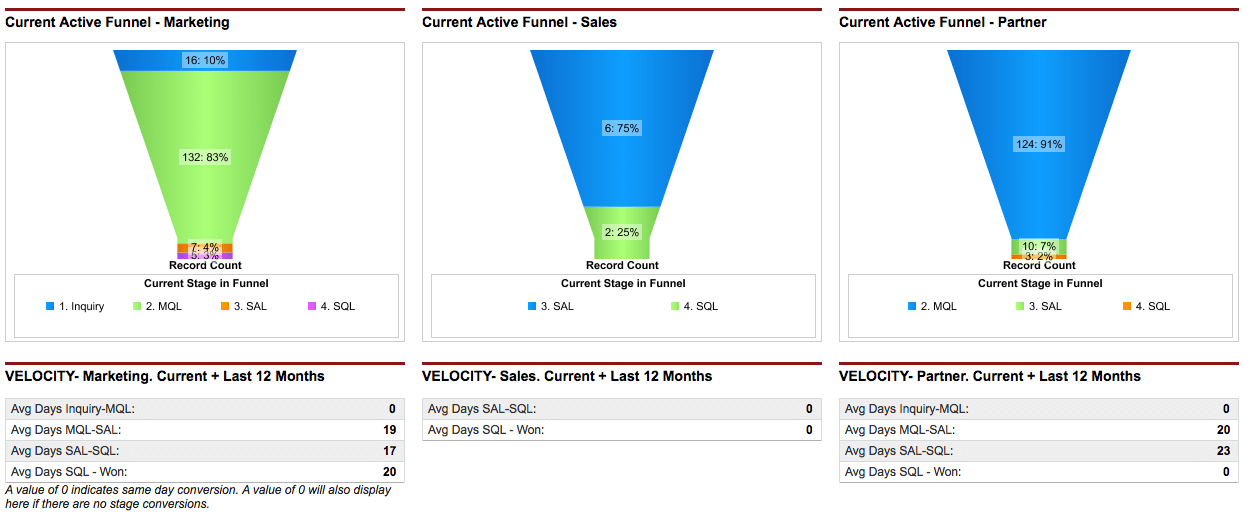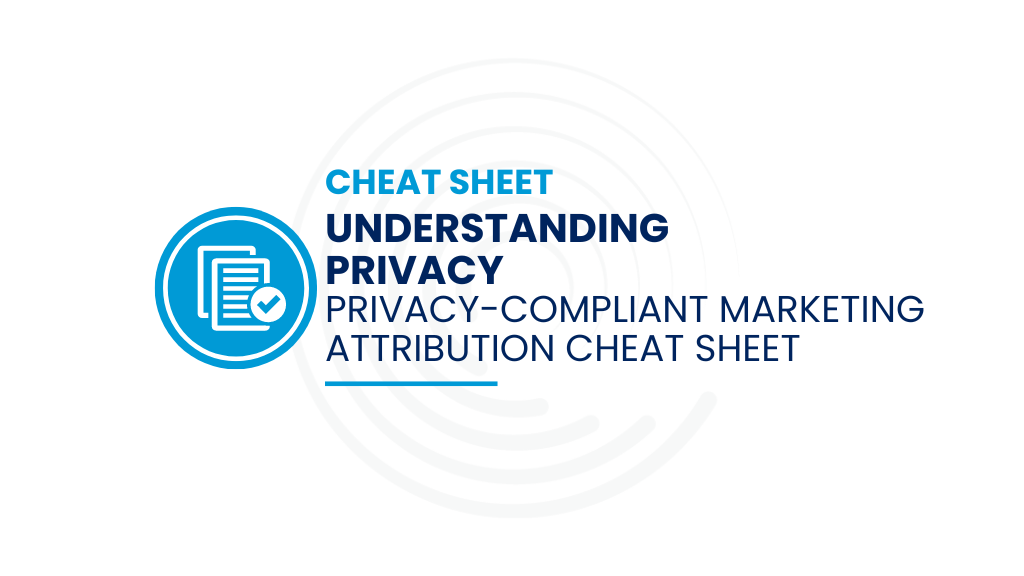Take a look at the funnel dashboard below.
If you have ever wondered how to get funnel metrics in Salesforce this is the post for you. If you are designing a funnel in Salesforce or simply trying to report on one, these two ideas will help you make sense of your funnel metrics.
Funnels are linear
A marketing funnel is a linear progression of stages–this means that you can’t progress through the funnel without hitting each stage. In a standard MQL>SAL>SQL>WON funnel a record can’t go to SQL without hitting SAL. Depending on how you are tracking the funnel it could be possible for the condition for SQL to be triggered before SAL, but in that instance you would make the assumption that record hit SAL. This is crucial to ensuring that you get the expected results when you are reporting on your funnel.
For sake of demonstration let’s walk through an imaginary scenario:
MQL Date: 1/1
SAL Date:
SQL Date: 2/1
Won Date: 3/1
If we were to try and calculate the conversion rate from MQL to SAL we would have to decide whether we should consider this record an SAL. However, the question we really want to answer is how many MQLs progressed to the next stage, and therefore it makes sense to treat this record as SAL even if it didn’t hit explicitly.
There are definitely use cases for tracking points that do not follow a linear progression. For example, you might want to know how many of your engagements included a certain type of demo. We call this type of metric a Funnel Dimension.
You can track multiple funnels
The combination of linear funnel stages and funnel dimensions are quite flexible, however, there are definitely instances where you would need to go beyond that. For example let’s say you have a sales team that sometimes sources their own leads and those leads never hit MQL. In this case you could define two funnel processes: a Marketing Funnel and Sales Funnel.
You can re-use the same fields if they overlap or a completely separate field. The key difference is that you now have a way to understand which process a record is following and can therefore tailor your reporting to understand that if you are looking at the conversion rate of MQLs you do not count the Sales Funnel SALs, similarly if you are looking at the sales funnel you would know to exclude Marketing SALs. If you reuse fields that have the same name you can even report across both funnels, you just need to make sure you are looking at fields where the progression makes sense.







